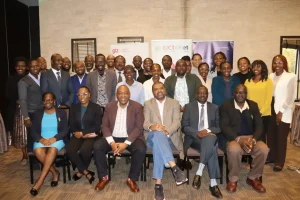By Neema Mujesia,
The Rise of Disinformation and Extremism
Disinformation has emerged as a pervasive challenge in today’s digital ecosystem, fueling mistrust, societal polarization, and, in extreme cases, radicalization. According to the upcoming 2024 CHRIPS Observatory Report, incidents of violent extremism have risen significantly over the past year.
Recent research also indicates a growing perception of increased recruitment into extremist groups, highlighting the urgency of addressing this issue.
The digital landscape has become a battleground where extremist narratives have succeded, making it crucial to examine the role of technology in both facilitating and countering radicalization.
How Technology Fuels Extremism
Technology is a double-edged sword in the fight against extremism.
“On the one hand, social media platforms have enabled extremist groups to disseminate radical narratives at an unprecedented scale, targeting vulnerable individuals by exploiting socio-economic grievances and manipulating emotions,” said Valarie Waswa, Legal Fellow at KICTANet and moderator of today’s session.
These digital spaces serve as fertile ground for recruitment, training, and the coordination of extremist activities. Personalized algorithms further exacerbate the problem by amplifying polarizing content, drawing users deeper into echo chambers that reinforce extremist ideologies. Additionally, encrypted communication channels and anonymous networks provide extremists with secure spaces to operate beyond traditional law enforcement reach.
The Evolving Tactics of Extremist Groups
To effectively counter online radicalization, it is essential to understand how extremist groups leverage technology.
“Terrorists have adapted their strategies to evade automated detection tools, using coded language, symbols, and emerging platforms to spread propaganda. Social media companies have faced criticism for their role in inadvertently facilitating extremist content, with some platforms accused of monetizing harmful content through engagement-driven algorithms,” said Brian Kimari, Research Fellow at CHRIPS.
The rise of deepfake technology has also made it easier to produce and distribute manipulated videos and images, further blurring the lines between fact and fiction in the digital age. These technological advancements present significant challenges for regulators and policymakers seeking to curb the spread of extremist content online.
The Need for Stronger Regulations and Awareness
Addressing these challenges requires a multi-faceted approach that includes awareness campaigns, improved content moderation, and stronger regulatory frameworks. Countries like Germany and the European Union have implemented policies such as the Digital Services Act and the Network Enforcement Act to combat hate speech and misinformation. Kenya and other African nations can draw lessons from these regulations while tailoring solutions to their unique socio-political contexts.
“Transparency in algorithmic decision-making, user empowerment through fact-checking initiatives, and clear pathways for reporting extremist content are crucial steps in fostering a safer digital environment. Collaboration between governments, tech companies, civil society organizations, and local communities is necessary to develop effective strategies for combating online radicalization,” said Mary Gitau, Trauma Therapist.
KICTANet’s Role in Promoting Digital Safety
At KICTANet, we recognize the critical role of digital governance in addressing the challenges posed by disinformation and extremist content online.
“Through research, advocacy, and multi-stakeholder engagement, we work towards policies that promote digital rights, online safety, and responsible technology use,” highlighted Cherie Oyier, Programme Officer at KICTANet.
Our initiatives focus on strengthening regulatory frameworks, raising awareness about digital threats, and equipping individuals with the skills to critically evaluate online content. By fostering a resilient digital ecosystem, KICTANet is committed to ensuring that technology remains a force for positive social change rather than a tool for exploitation and radicalization.
![]()




